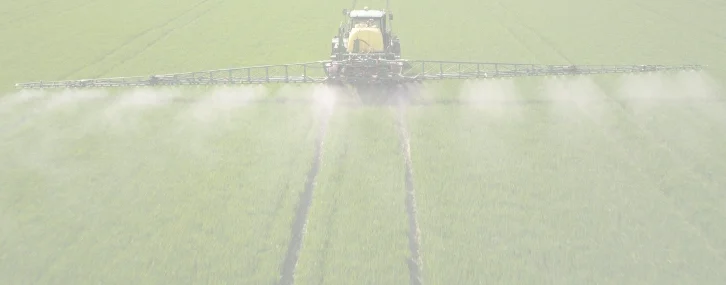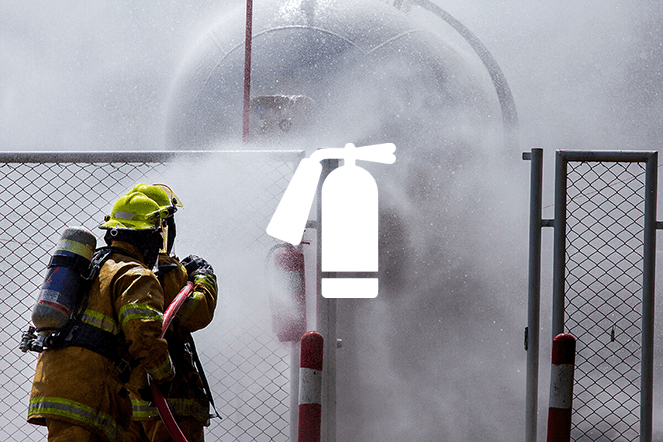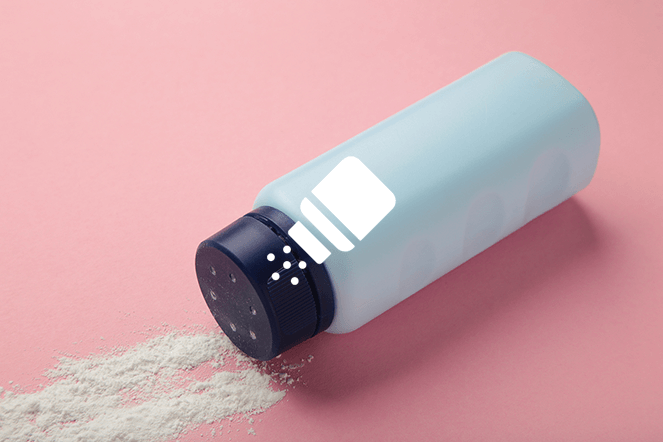Roundup

Roundup Lawsuits: Seeking Justice for Non-Hodgkin Lymphoma Victims
For decades, Roundup, a widely used weed killer, has been a staple in agriculture, landscaping, and home gardens. Manufactured by Monsanto (now owned by Bayer), its active ingredient, glyphosate, has been promoted as safe and effective. However, thousands of lawsuits and a growing body of scientific evidence allege a dangerous link between exposure to Roundup and the development of non-Hodgkin lymphoma (NHL).
If you or a loved one developed non-Hodgkin lymphoma after significant exposure to Roundup, you may be entitled to substantial compensation. Tort Portal is dedicated to connecting you with highly experienced legal professionals who are actively fighting to hold Roundup’s manufacturers accountable for failing to warn consumers about these severe health risks.
What is Roundup and Glyphosate?
Roundup is a broad-spectrum herbicide that kills most plants it comes into contact with. Its primary active ingredient is glyphosate, which works by inhibiting an enzyme pathway essential for plant growth. Roundup’s use dramatically increased with the introduction of “Roundup Ready” genetically modified crops, designed to resist glyphosate, allowing farmers to spray fields without harming their crops.
Despite its widespread use and Monsanto’s assurances of safety, glyphosate has become one of the most controversial chemicals globally, primarily due to the ongoing litigation alleging its link to cancer.
The Link Between Roundup (Glyphosate) Exposure and Non-Hodgkin Lymphoma
The scientific and legal controversy surrounding Roundup largely stems from the International Agency for Research on Cancer (IARC), a branch of the World Health Organization (WHO), which classified glyphosate as “probably carcinogenic to humans” in 2015. This classification sparked a wave of lawsuits against Monsanto.
Lawsuits generally allege that:
- Glyphosate is Carcinogenic: That the active ingredient, glyphosate, causes non-Hodgkin lymphoma.
- Formulation Toxicity: That other “inert” ingredients in Roundup formulations may enhance the toxicity of glyphosate, making the final product more dangerous than glyphosate alone.
- Failure to Warn: Monsanto knew or should have known about the cancer risks associated with Roundup but failed to adequately warn consumers and regulators.
- Misleading Information: Allegations that Monsanto actively engaged in campaigns to downplay the risks and influence scientific findings.
Non-Hodgkin Lymphoma (NHL) is a type of cancer that begins in white blood cells called lymphocytes, which are part of the body’s immune system. Symptoms of NHL can include:
- Swollen lymph nodes (often in the neck, armpit, or groin)
- Fever
- Night sweats
- Weight loss
- Fatigue
- Skin rash or itchy skin
Who is at Risk of Roundup Exposure and NHL?
Individuals most frequently exposed to Roundup and subsequently diagnosed with non-Hodgkin lymphoma include:
- Farmers and Farmworkers: Those who regularly mix, load, or apply Roundup on agricultural crops.
- Agricultural Workers: Including those involved in farming operations where Roundup is used.
- Landscapers and Groundskeepers: Professionals who frequently use Roundup for weed control in parks, schools, and commercial properties.
- Nursery and Garden Center Employees: Individuals who handle or are exposed to Roundup in their work environment.
- Home Gardeners: Regular users of Roundup for residential weed control.
Exposure typically occurs through skin contact, inhalation of spray mist, or ingestion.
Roundup Lawsuits: Seeking Accountability from Bayer (Monsanto)
Thousands of individuals diagnosed with non-Hodgkin lymphoma have filed lawsuits against Monsanto (now Bayer), alleging that the company’s Roundup weed killer caused their cancer and that the company concealed its dangers.
Notable aspects of the litigation include:
- Jury Verdicts: Several high-profile trials have resulted in significant verdicts against Monsanto, with juries awarding substantial damages, including punitive damages, to plaintiffs.
- Settlements: Bayer has paid billions of dollars to settle tens of thousands of Roundup lawsuits, although a significant number of cases remain active and new lawsuits continue to be filed.
- Multidistrict Litigation (MDL): Many federal lawsuits have been consolidated into an MDL to manage the overwhelming number of similar claims efficiently.
- Ongoing Legal Battles: Despite settlements, Bayer continues to defend against remaining and new lawsuits, leading to ongoing trials and appeals.
Plaintiffs in these lawsuits are seeking compensation for various damages, including:
- Past and future medical expenses related to NHL treatment.
- Lost wages and diminished earning capacity.
- Pain and suffering.
- Loss of enjoyment of life.
- Wrongful death damages for families who lost loved ones to Roundup-related NHL.
Do You Qualify for a Roundup Lawsuit?
You may be eligible to file a Roundup lawsuit if:
- You had significant exposure to Roundup (e.g., through farming, landscaping, or regular home use).
- You were diagnosed with non-Hodgkin lymphoma.
- Your diagnosis occurred after your Roundup exposure.
It is crucial to act quickly. Each state has specific statutes of limitations (legal deadlines) for filing product liability lawsuits. Consulting with an attorney as soon as possible is vital to protect your legal rights and ensure your claim is not time-barred.
Let Tort Portal Connect You with Roundup Litigation Experts
The legal battle against a corporate giant like Bayer (Monsanto) requires specialized knowledge, extensive resources, and a fierce commitment to justice. You need an attorney with a proven track record in complex toxic torts and mass tort litigation specifically involving Roundup.
Tort Portal can help. We connect individuals like you with leading law firms that possess deep expertise in Roundup litigation. Our partner attorneys understand the scientific evidence, the nuances of the ongoing legal challenges, and how to build a powerful case to pursue the maximum compensation you deserve.
If you or a loved one developed non-Hodgkin lymphoma after using Roundup, don’t face this challenge alone. Your path to justice begins here.
Paraquat

Paraquat Lawsuits: Ongoing Fight for Parkinson’s Disease Victims
Paraquat, a highly toxic herbicide used widely in agricultural settings, has become the focus of extensive litigation due to a severe alleged link to Parkinson’s disease. For decades, this potent weed killer, primarily manufactured by companies like Syngenta and Chevron Phillips Chemical Co., was used with little public awareness of its potential neurotoxic effects.
If you or a loved one developed Parkinson’s disease after significant exposure to Paraquat, you may be eligible to join the thousands seeking justice and substantial compensation. Tort Portal is committed to connecting you with experienced legal professionals who are actively navigating the evolving Paraquat lawsuits, including current settlement discussions.
What is Paraquat and Why is it Controversial?
Paraquat dichloride is a fast-acting, non-selective herbicide. Its extreme toxicity has led the U.S. Environmental Protection Agency (EPA) to classify it as a “Restricted Use Pesticide,” meaning only licensed applicators can purchase and use it. It is banned in over 60 countries due to health concerns, yet its use has persisted and even increased in the U.S.
The controversy stems from a growing body of scientific research and a significant number of lawsuits alleging that chronic exposure to Paraquat can lead to the development of Parkinson’s disease.
The Scientific & Legal Link to Parkinson’s Disease
Studies have increasingly highlighted a correlation between Paraquat exposure and an elevated risk of Parkinson’s disease. The proposed mechanisms involve:
- Oxidative Stress: Paraquat generates harmful reactive oxygen species in cells, which can damage critical cellular components, including those in the brain’s dopamine-producing neurons.
- Mitochondrial Dysfunction: It can interfere with the function of mitochondria, the energy-producing organelles within cells, a process implicated in Parkinson’s pathology.
- Neurotoxicity: Research suggests Paraquat can cross the blood-brain barrier and directly cause degeneration of dopaminergic neurons, which are crucial for motor control and are lost in Parkinson’s patients.
Numerous epidemiological studies, including those analyzing data from the Agricultural Health Study, have reported an increased incidence of Parkinson’s disease among individuals with Paraquat exposure.
Parkinson’s disease is a progressive neurological disorder characterized by tremors, rigidity, slow movement (bradykinesia), and impaired balance. These symptoms result from the death of dopamine-producing neurons in the brain.
Who is at Risk of Paraquat Exposure?
The individuals most commonly impacted by Paraquat exposure include:
- Farmers and Farmworkers: Those directly involved in mixing, loading, or applying Paraquat.
- Pesticide Applicators: Licensed professionals who spray the herbicide.
- Agricultural Chemical Handlers: Individuals involved in the transport, storage, or manufacturing of Paraquat.
- Rural Residents: Those living near farms where Paraquat is regularly sprayed may be exposed through drift or runoff.
Even seemingly minimal or indirect contact over time is now a focus in the ongoing litigation.
Current Status of Paraquat Lawsuits (as of mid-2025)
Thousands of lawsuits have been filed against Paraquat manufacturers, primarily Syngenta and Chevron Phillips Chemical Co., alleging that they failed to warn consumers about the herbicide’s link to Parkinson’s disease. These cases have been consolidated into a large Multidistrict Litigation (MDL) in federal court (MDL-3004).
Key Developments as of June 2025:
- Growing Number of Cases: The Paraquat MDL continues to expand, with over 6,100 lawsuits pending as of early June 2025, and new cases continue to be filed.
- Tentative Settlement in Progress: There have been significant reports and court filings indicating that lead attorneys in the MDL have reached a tentative settlement agreement with the defendants. The judge has paused discovery to allow parties to finalize the deal, with updates expected soon.
- Bellwether Trials: While settlement talks are underway, initial “bellwether” (test) trials are still on the schedule, with the first potentially set for October 2025. These trials help gauge how juries might react to evidence and arguments, influencing broader settlement values.
- Case Dismissals: Some lawsuits have been dismissed due to plaintiffs’ failure to comply with court-ordered documentation deadlines (e.g., submitting Plaintiff Assessment Questionnaires). This underscores the critical importance of working with an experienced legal team.
- State Court Cases: Beyond the federal MDL, Paraquat lawsuits are also active in various state courts, with a significant number pending in jurisdictions like Pennsylvania.
Plaintiffs in these lawsuits are seeking compensation for:
- Medical expenses (past and future for Parkinson’s treatment).
- Lost wages and diminished earning capacity.
- Pain and suffering.
- Loss of enjoyment of life.
- Wrongful death (for families who lost a loved one due to Paraquat-related Parkinson’s).
Do You Qualify for a Paraquat Lawsuit?
You may be eligible to file a Paraquat lawsuit if:
- You had regular exposure to Paraquat (e.g., as a farmer, farmworker, licensed applicator, or living near agricultural land where it was sprayed).
- You received a diagnosis of Parkinson’s disease.
- Your Parkinson’s diagnosis occurred after your Paraquat exposure.
Given the active settlement discussions and strict legal deadlines (statutes of limitations vary by state), it is critical to consult with an attorney immediately. Waiting could jeopardize your ability to file a claim.
Let Tort Portal Connect You with Paraquat Legal Experts
Navigating a mass tort lawsuit against major chemical companies requires profound legal expertise and substantial resources. You need an attorney who is deeply familiar with the evolving science, the complexities of the MDL, and how to effectively negotiate or litigate to secure your rightful compensation.
Tort Portal can help. We specialize in connecting individuals affected by Paraquat with leading law firms that have a proven track record in toxic tort and mass tort litigation. Our partner attorneys are well-versed in the latest developments of the Paraquat lawsuits and are committed to fighting fiercely for the justice you deserve.
If you or a loved one developed Parkinson’s disease after Paraquat exposure, don’t delay. Your journey toward answers and compensation starts by understanding your legal options.
Depo Provera

Depo-Provera Lawsuits: Seeking Justice for Brain Tumor Victims
Depo-Provera, a widely used injectable contraceptive manufactured by Pfizer Inc. (and its subsidiaries like Pharmacia & Upjohn Co.), has provided a convenient birth control option for millions of women for decades. However, recent scientific studies and a rapidly growing number of lawsuits allege a concerning link between prolonged use of Depo-Provera and the development of meningioma brain tumors.
If you or a loved one used Depo-Provera (or its authorized generics like Depo-SubQ Provera 104) for an extended period and were subsequently diagnosed with a meningioma, you may be eligible to file a lawsuit and seek significant compensation. Tort Portal is dedicated to connecting you with experienced legal professionals who are actively pursuing these critical claims against Pfizer for failing to adequately warn about these serious health risks.
What is Depo-Provera?
Depo-Provera (medroxyprogesterone acetate, or MPA) is a progestin-only injectable birth control method. It works by preventing ovulation, thickening cervical mucus to block sperm, and thinning the uterine lining. Administered every three months, it has been a popular choice due to its convenience and high efficacy in preventing pregnancy. It is also sometimes prescribed for conditions like endometriosis.
The Alleged Link to Meningioma Brain Tumors
The primary focus of current Depo-Provera litigation is the alleged link between its active ingredient, medroxyprogesterone acetate, and the development of meningiomas. Meningiomas are typically slow-growing tumors that form in the meninges, the membranes surrounding the brain and spinal cord. While often benign, their growth can put pressure on the brain or spinal cord, leading to serious neurological symptoms and potentially requiring surgery, radiation, or other intensive medical interventions.
Key allegations in Depo-Provera lawsuits include:
- Scientific Evidence: Multiple studies, particularly a significant French national case-control study published in 2023, have provided strong evidence linking prolonged use of progestogens like MPA to a significantly increased risk of developing meningiomas (some studies suggest a risk up to 5.6 times higher for long-term users).
- Failure to Warn: Lawsuits contend that Pfizer knew or should have known about these risks, given emerging international research and the fact that warnings about meningioma risks were added to Depo-Provera packaging in Europe and Canada as early as 2022. Despite this, U.S. warning labels allegedly remained inadequate, depriving American patients and doctors of crucial safety information.
- Negligence: Allegations of negligence in product design, testing, and marketing, prioritizing profits over patient safety.
Common Symptoms of Meningiomas (that may prompt a lawsuit investigation):
- Chronic and worsening headaches
- Vision changes (blurred vision, double vision, loss of peripheral vision)
- Seizures (new onset or increased frequency)
- Dizziness or vertigo
- Nausea and vomiting without other known cause
- Memory issues or difficulty concentrating
- Weakness or numbness on one side of the body
- Personality changes or mood disorders
- Hearing problems (e.g., ringing in the ears)
Other Serious Side Effects of Depo-Provera
While meningiomas are the current focus of litigation, Depo-Provera has also been associated with other serious side effects, some of which have been the subject of past lawsuits or regulatory warnings:
- Bone Density Loss (Osteoporosis): Depo-Provera can lead to significant decreases in bone mineral density, increasing the risk of fractures, especially with long-term use (often leading to a recommendation not to use for more than two years continuously without bone density monitoring). Past lawsuits addressed inadequate warnings about this risk.
- Delayed Return to Fertility: It can take 10 months or more on average for fertility to return after discontinuing Depo-Provera, which can be a significant concern for women planning future pregnancies.
- Blood Clots: Although less frequently cited in current Depo-Provera litigation compared to other hormonal contraceptives, progestin-only methods can carry a theoretical risk of blood clots.
- Depression and Mood Changes: Hormonal fluctuations can contribute to mental health impacts.
Current Status of Depo-Provera Lawsuits (as of mid-June 2025)
The Depo-Provera litigation is rapidly expanding, with significant activity in federal courts.
- Multidistrict Litigation (MDL 3140): In February 2025, the U.S. Judicial Panel on Multidistrict Litigation (JPML) consolidated all federal Depo-Provera lawsuits into MDL No. 3140, centralized in the U.S. District Court for the Northern District of Florida under Judge M. Casey Rodgers. This consolidation aims to streamline pretrial proceedings for the growing number of similar claims.
- Rapidly Increasing Case Count: As of early June 2025, the MDL has grown to over 348 active cases, with dozens more being filed monthly. Legal experts anticipate this number to rise significantly as more women become aware of the potential link between their Depo-Provera use and meningioma diagnosis.
- Pilot Cases & Discovery: The court has selected five “pilot cases” to proceed through early discovery, and strict deadlines are being set for discovery (e.g., federal preemption issues discovery by July 25, 2025, general causation discovery by September 23, 2025). This indicates the litigation is moving forward quickly.
- Eligibility and Documentation: Plaintiffs are required to provide documentary proof of Depo-Provera use (typically for at least one year/four shots) and a confirmed diagnosis of an intracranial meningioma that occurred after their use.
- No Broad Settlements Yet: While the litigation is gaining momentum, widespread settlements are not currently active, as the cases are still in the early discovery phases. However, the rapid growth and the establishment of an MDL suggest increasing pressure on Pfizer.
- Generic Depo-Provera Lawsuits: Claims involving authorized generic versions of Depo-Provera may also be permitted, with plaintiffs arguing that Pfizer maintained control over labeling and profits even for these products.
Plaintiffs in these lawsuits are seeking compensation for various damages, including:
- Medical expenses (including diagnosis, surgery, radiation, and ongoing treatment for meningiomas).
- Lost wages and diminished earning capacity due to the illness and its treatment.
- Significant pain and suffering.
- Emotional distress and mental anguish.
- Disability and long-term care costs.
- Wrongful death damages for families who lost loved ones due to Depo-Provera-related complications.
- Punitive damages, if Pfizer’s conduct is deemed reckless or intentional.
Do You Qualify for a Depo-Provera Lawsuit?
You may be eligible to file a Depo-Provera lawsuit if:
- You used Depo-Provera or an authorized generic for a period of at least one year (or approximately 4 injections).
- You were diagnosed with an intracranial meningioma (brain tumor).
- Your meningioma diagnosis occurred after your Depo-Provera use began.
It is absolutely essential to act quickly. Strict statutes of limitations (legal deadlines) apply to filing these types of lawsuits, and these deadlines vary significantly by state. Consulting with an attorney as soon as possible is crucial to preserve your legal rights and ensure your claim is not time-barred.
Let Tort Portal Connect You with Depo-Provera Legal Experts
Navigating a dangerous drug lawsuit against a major pharmaceutical company like Pfizer requires highly specialized legal knowledge, extensive resources, and a deep understanding of complex medical and scientific evidence.
Tort Portal can help. We specialize in connecting individuals affected by Depo-Provera with leading law firms that have proven expertise and a strong track record in pharmaceutical mass tort litigation. Our partner attorneys are at the forefront of the Depo-Provera lawsuits, committed to investigating your claim thoroughly, advocating fiercely on your behalf, and pursuing the maximum compensation you deserve.
If you or a loved one developed a meningioma after using Depo-Provera, don’t face this immense challenge alone. Take the first step toward understanding your legal options and securing the justice you deserve.
NEC Baby Formula

NEC Baby Formula
NEC Baby Formula Lawsuits: Seeking Justice for Premature Infants
Necrotizing Enterocolitis (NEC) is a devastating and often life-threatening intestinal disease primarily affecting premature infants. Tragically, a growing body of scientific evidence and thousands of lawsuits allege a dangerous link between cow’s milk-based baby formulas, such as Similac (manufactured by Abbott Laboratories) and Enfamil (manufactured by Mead Johnson & Company, a subsidiary of Reckitt Benckiser), and an increased risk of NEC in these vulnerable newborns.
If your premature infant was diagnosed with Necrotizing Enterocolitis after being fed a cow’s milk-based formula, your family may be entitled to significant compensation. Tort Portal is dedicated to connecting you with highly experienced legal professionals who are actively pursuing these critical lawsuits to hold formula manufacturers accountable.
Understanding Necrotizing Enterocolitis (NEC)
NEC is a severe gastrointestinal disease where tissue in the infant’s intestines becomes inflamed and begins to die. This can lead to a perforation (hole) in the intestinal wall, allowing bacteria to leak into the abdomen or bloodstream, causing severe infection (sepsis) and potentially leading to multi-organ failure or death.
Key Facts About NEC:
- Primarily Affects Premature Infants: NEC is most common in babies born before 37 weeks gestation, particularly those with very low birth weights (under 3 pounds, 5 ounces).
- Rapid Progression: While some cases are mild, NEC can progress rapidly and require emergency surgery to remove damaged intestinal tissue.
- Long-Term Complications: Survivors may face lifelong challenges, including short bowel syndrome, intestinal strictures, developmental delays, feeding difficulties, and neurological damage.
The Alleged Link: Cow’s Milk Formula and NEC
Numerous studies and medical literature dating back decades have indicated that cow’s milk-based formulas, even those specifically designed for premature infants, significantly increase the risk of NEC compared to human breast milk. Human breast milk contains vital antibodies, growth factors, and other protective elements that help mature an infant’s digestive system and provide immunity, which are absent in cow’s milk formulas.
Lawsuits against manufacturers like Abbott Laboratories (Similac) and Mead Johnson & Company (Enfamil) allege:
- Increased Risk: That their cow’s milk-based formulas substantially increase the risk of NEC in premature and low-birth-weight infants.
- Failure to Warn: That despite knowing or having access to this scientific evidence for years, manufacturers failed to adequately warn parents, caregivers, and medical professionals about the heightened NEC risk associated with their products.
- Deceptive Marketing: That companies deceptively marketed their formulas as safe and necessary for premature infants, even though breast milk or donor human milk is recognized as superior and safer for these vulnerable babies.
- Negligence & Product Defects: That the formulas were defective or unreasonably dangerous for premature infants.
Common Products Involved in NEC Lawsuits:
Lawsuits typically target cow’s milk-based formulas and fortifiers commonly used in Neonatal Intensive Care Units (NICUs):
- Similac Products (Abbott Laboratories):
- Similac Special Care
- Similac Human Milk Fortifier
- Similac NeoSure
- Similac Alimentum
- Similac Advance
- Enfamil Products (Mead Johnson & Company / Reckitt Benckiser):
- Enfamil Premature
- Enfamil Human Milk Fortifier
- Enfamil EnfaCare
- Enfamil NeuroPro EnfaCare
- Enfamil 24 Cal
Symptoms and Diagnosis of NEC:
Symptoms of NEC can appear suddenly or gradually in the first few weeks after birth. If your baby exhibits any of these signs, seek immediate medical attention:
- Abdominal swelling, bloating, or tenderness
- Bloody or black stools, or diarrhea
- Green or yellow vomit (bile)
- Feeding intolerance (poor feeding, refusing to eat, or food remaining in stomach longer than expected)
- Lethargy or sluggishness
- Changes in heart rate, blood pressure, breathing (e.g., apnea – pauses in breathing), or body temperature
- Red or discolored abdomen
NEC is typically diagnosed through physical examination, abdominal X-rays (which may show air bubbles in the intestinal wall or cavity), and blood tests.
Current Status of NEC Baby Formula Lawsuits (as of June 2025)
The NEC baby formula litigation is one of the most significant and closely watched mass tort cases in the U.S.
- Multidistrict Litigation (MDL): Thousands of federal lawsuits are consolidated in MDL 3026 before Judge Rebecca Pallmeyer in the U.S. District Court for the Northern District of Illinois. As of June 2025, there are over 740 active cases pending in this MDL.
- Bellwether Trials: Key bellwether (test) trials are scheduled to begin in 2025 and continue into 2026. These trials are crucial as their outcomes can significantly influence future settlements or the direction of the litigation.
- Recent Development (May 2025): The judge granted summary judgment in favor of Abbott in the first bellwether trial, effectively dismissing that specific case. However, she clarified this decision applies only to that case and importantly, denied motions from defendants to exclude key expert witnesses, allowing the broader litigation to move forward.
- State Court Verdicts: While the federal MDL progresses, several state court cases have already gone to trial, with mixed results.
- March 2024: An Illinois jury awarded $60 million against Mead Johnson (Enfamil) to the family of an infant who died from NEC.
- July 2024: A Missouri jury awarded $495 million against Abbott Laboratories (Similac) to the family of an infant who developed NEC, including a substantial punitive damages award.
- March 2025: A Missouri judge ordered a retrial in a case previously won by the defense, citing “misconduct” by the defense team.
- Ongoing Filings: New lawsuits continue to be filed, indicating the expanding scope of the litigation.
Plaintiffs are seeking compensation for severe damages, including:
- Extensive medical expenses (past and future, including surgeries, long-term care, and rehabilitation).
- Lost earning capacity if the child suffers permanent disabilities.
- Significant pain and suffering experienced by the child and family.
- Emotional distress and mental anguish.
- Wrongful death damages in tragic cases where NEC was fatal.
Do You Qualify for an NEC Baby Formula Lawsuit?
You may be eligible to file an NEC baby formula lawsuit if:
- Your infant was born prematurely or had a low birth weight.
- Your infant was fed cow’s milk-based formula (Similac, Enfamil, or similar products) in the NICU or at home.
- Your infant was diagnosed with Necrotizing Enterocolitis (NEC).
It is crucial to act without delay. Strict statutes of limitations (deadlines for filing lawsuits) apply and vary by state. Missing these deadlines can permanently bar your right to seek compensation.
Let Tort Portal Connect You with NEC Baby Formula Legal Experts
The fight for justice in NEC baby formula cases is complex, requiring specialized legal knowledge in product liability and medical malpractice. You need an attorney who understands the intricate medical science of NEC, the history of formula research, and the strategies necessary to take on powerful corporations.
Tort Portal can help. We connect families affected by NEC with leading law firms that have extensive experience and a proven track record in baby formula litigation. Our partner attorneys are committed to investigating your claim thoroughly, advocating fiercely on your behalf, and pursuing the maximum compensation your family deserves.
If your premature infant developed NEC after consuming cow’s milk-based formula, don’t face this immense challenge alone. Take the first step toward understanding your legal options and securing the future care your child needs.

AFFF FireFoam
AFFF Lawsuits: Seeking Justice for PFAS Contamination & Cancer Victims
Aqueous Film-Forming Foam (AFFF) is a specialized firefighting foam that has been used for decades to combat high-intensity, flammable liquid fires, particularly those involving jet fuel. While effective, AFFF contains highly toxic chemicals known as PFAS (per- and polyfluoroalkyl substances), often called “forever chemicals” due to their persistence in the environment and the human body.
Thousands of lawsuits allege that exposure to AFFF – whether through direct contact or contaminated water supplies – has led to severe health complications, most notably various cancers. If you or a loved one developed cancer or other serious illnesses after exposure to AFFF, your family may be entitled to significant compensation. Tort Portal is dedicated to connecting you with experienced legal professionals who are actively pursuing these critical lawsuits.
What is AFFF and Why is it Harmful?
AFFF was developed in the 1960s and quickly became the standard for suppressing liquid fuel fires at military bases, airports, fire departments, and industrial facilities. Its efficacy comes from the PFAS chemicals it contains, which create a film that quickly smothers the fire.
The danger lies in these PFAS chemicals, including PFOS (perfluorooctane sulfonate) and PFOA (perfluorooctanoic acid). These synthetic compounds are extremely resistant to heat, water, and oil, making them highly effective fire suppressants but also incredibly persistent and bioaccumulative. Once released into the environment, they do not break down, contaminating soil, groundwater, and drinking water sources for decades. When absorbed by the human body, PFAS can accumulate in the blood, liver, kidneys, and other tissues, leading to long-term health risks.
Health Risks Linked to AFFF (PFAS) Exposure
A growing body of scientific research and direct legal testimony from AFFF lawsuits point to a strong connection between PFAS exposure and a range of severe health conditions. The most commonly cited illnesses in litigation include:
- Kidney Cancer: A significant focus of current litigation.
- Testicular Cancer: Also a primary focus in initial bellwether trials.
- Thyroid Cancer: PFAS can disrupt thyroid hormone function.
- Liver Cancer: PFAS accumulate in the liver.
- Ulcerative Colitis: An inflammatory bowel disease.
- Thyroid Disease: Including hypothyroidism and other dysfunctions.
- Prostate Cancer
- Bladder Cancer
- Pancreatic Cancer
- Breast Cancer
- Leukemia and Lymphoma (beyond Non-Hodgkin Lymphoma, though that’s common in Roundup cases).
- High Cholesterol
- Pregnancy-Induced Hypertension (Preeclampsia) and Gestational Diabetes
- Immune System Suppression
- Developmental Effects in Children
- Infertility
Who is at Risk of AFFF Exposure?
Individuals who have faced the highest risk of AFFF exposure include:
- Firefighters: Both civilian and military firefighters who directly handled or were repeatedly exposed to AFFF during training exercises or fire suppression.
- Military Personnel: Service members (current and former) stationed at military bases where AFFF was regularly used, including pilots, mechanics, and other personnel.
- Airport Workers: Those involved in crash crew training, maintenance, or operations at commercial airports where AFFF was used.
- Industrial Workers: Employees at chemical plants, oil refineries, or other facilities that used AFFF to combat industrial fires.
- Residents Near Contaminated Sites: Individuals and communities living near military bases, airports, or industrial facilities where AFFF was frequently used, leading to contaminated groundwater or drinking water.
Exposure can occur through inhalation of foam mist, direct skin contact, or ingestion of contaminated water or food grown in contaminated soil.
Current Status of AFFF Lawsuits (as of June 2025)
The AFFF litigation is one of the largest and most complex mass torts in U.S. history. Thousands of lawsuits against manufacturers like 3M, DuPont, Chemours, Tyco Fire Products, and Kidde-Fenwal have been consolidated into a Multidistrict Litigation (MDL 2873) in the U.S. District Court for the District of South Carolina.
Key Developments as of June 2025:
- Significant Growth: The AFFF MDL continues to grow rapidly, with over 10,391 active cases as of June 2025.
- Bellwether Trials Approaching: The first individual personal injury bellwether trial is scheduled for October 20, 2025. This initial trial will focus exclusively on kidney cancer claims to avoid jury confusion, as ruled by Judge Richard Gergel. The judge is still deciding whether this will be a single plaintiff or up to three plaintiffs consolidated.
- Settlement Momentum: While specific individual personal injury settlements have not yet occurred on a large scale, there is increasing optimism among legal professionals that broader settlements may materialize before or after the initial bellwether trials. Earlier in 2024, significant settlements were reached with public water systems over PFAS contamination (e.g., DuPont’s $1.185 billion settlement).
- Expanded Accepted Injuries: The litigation is expanding to include more conditions. Liver cancer and thyroid cancer have recently been added to the list of conditions that plaintiffs plan to pursue as part of the MDL, with expert reports due later in summer 2025.
- Science Days: “Science Days” are scheduled for June 6 and June 20, 2025, to present scientific research on the links between PFAS exposure and conditions like kidney cancer, testicular cancer, ulcerative colitis, liver cancer, and thyroid disease.
- State-Level Actions: Beyond the federal MDL, states and municipalities continue to pursue separate lawsuits against AFFF manufacturers for environmental contamination and cleanup costs.
- Legislative Action: There is increasing legislative action across various states to ban or restrict PFAS-containing products, reflecting growing public health concerns.
Plaintiffs in these lawsuits are seeking compensation for:
- Past and future medical expenses related to their AFFF-linked illness.
- Lost wages and diminished earning capacity due to their condition.
- Significant pain and suffering.
- Emotional distress and mental anguish.
- Loss of enjoyment of life.
- Wrongful death damages for families who lost a loved one due to AFFF-related disease.
Do You Qualify for an AFFF Lawsuit?
You may be eligible to file an AFFF lawsuit if:
- You had significant exposure to AFFF (e.g., as a firefighter, military personnel, or lived near a contaminated site).
- You were diagnosed with a qualifying illness linked to PFAS exposure (e.g., kidney cancer, testicular cancer, thyroid cancer, liver cancer, ulcerative colitis, or thyroid disease).
- Your diagnosis occurred after your AFFF exposure.
Given the active and rapidly evolving nature of this litigation, including the approaching bellwether trials and potential settlement discussions, it is absolutely critical to consult with an attorney immediately. Strict statutes of limitations (legal deadlines) apply, and missing them could permanently bar your right to seek compensation.
Let Tort Portal Connect You with AFFF Litigation Experts
The fight for justice against major chemical manufacturers involved in the AFFF litigation requires a legal team with unparalleled expertise, extensive resources, and a deep understanding of complex scientific and environmental evidence.
Tort Portal can help. We specialize in connecting individuals affected by AFFF with leading law firms that have a proven track record in toxic tort and mass tort litigation. Our partner attorneys are at the forefront of the AFFF lawsuits, understand the nuances of PFAS science, and are committed to fighting fiercely for the justice and maximum compensation you deserve.
If you or a loved one developed a serious illness after AFFF exposure, don’t face this battle alone. Take the first step toward securing your future and holding responsible parties accountable.

Talcum
Talcum Powder Lawsuits: Seeking Justice for Cancer Victims
For decades, talcum powder, commonly found in baby powder and various cosmetic products, was considered a harmless household staple. However, a growing body of scientific evidence and thousands of lawsuits allege a dangerous link between regular use of talc-based powders and serious cancers, most notably ovarian cancer and mesothelioma.
If you or a loved one developed ovarian cancer, mesothelioma, or other related illnesses after consistent use of talc-based powders, you may be entitled to significant compensation. Tort Portal is here to connect you with experienced legal professionals who are dedicated to holding manufacturers accountable for failing to warn consumers about these severe health risks.
Understanding the Concerns About Talcum Powder
Talc is a naturally occurring mineral composed of magnesium, silicon, and oxygen. In its natural form, talc deposits can be found alongside asbestos, a known carcinogen. While manufacturers claim their cosmetic talc products are asbestos-free, lawsuits allege that even trace amounts of asbestos-contaminated talc, or perhaps the talc itself, contributed to cancer development.
The primary concerns revolve around:
- Asbestos Contamination: The historical possibility of asbestos, a known carcinogen, contaminating talc during the mining process.
- Perineal Use: The long-term use of talc-based powders in the genital area, leading to particles migrating into the reproductive system.
- Inhalation: The inhalation of talc dust, especially relevant for mesothelioma claims.
The Alleged Link to Cancer
1. Ovarian Cancer: This is the most common and widely publicized link in talcum powder litigation. Lawsuits allege that microscopic talc particles, when applied regularly to the genital area, travel through the vagina, uterus, and fallopian tubes to the ovaries. Once there, these particles can cause chronic inflammation, which some studies and legal arguments suggest can lead to the development of ovarian cancer.
- Symptoms of Ovarian Cancer: Often subtle in early stages, but can include bloating, pelvic or abdominal pain, difficulty eating or feeling full quickly, and urinary symptoms (urgency or frequency).
2. Mesothelioma: Mesothelioma is a rare and aggressive cancer primarily caused by asbestos exposure. Lawsuits involving talcum powder and mesothelioma allege that some talc products were contaminated with asbestos during mining, and users inhaled these asbestos fibers, leading to this deadly lung cancer.
- Symptoms of Mesothelioma: Shortness of breath, chest pain, persistent cough, and unexplained weight loss.
3. Other Cancers: While less common in litigation, some claims also explore potential links between talc and other cancers, such as lung cancer (from prolonged inhalation) or uterine cancer.
Who is at Risk of Talcum Powder-Related Cancers?
The individuals most commonly impacted in talcum powder lawsuits are:
- Women who used talc-based baby powder or feminine hygiene products for perineal dusting over many years.
- Individuals who used talc-containing products and were later diagnosed with mesothelioma, particularly if asbestos contamination is alleged.
- Those who worked in environments with high talc dust exposure (e.g., talc miners or processors) and developed related illnesses.
Common Talc-Based Products Involved:
- Johnson & Johnson’s Baby Powder
- Shower to Shower (originally a J&J product)
- Other generic or branded talc-based cosmetic powders (face powders, body powders, some deodorants)
(Note: Many manufacturers, including Johnson & Johnson, have transitioned to cornstarch-based alternatives for some products, or ceased talc-based production in certain markets, due to litigation and changing consumer preferences, though they maintain product safety.)
Talcum Powder Lawsuits: Holding Manufacturers Accountable
Thousands of lawsuits have been filed against talcum powder manufacturers, most notably Johnson & Johnson. These lawsuits allege:
- Failure to Warn: That manufacturers knew or should have known about the potential health risks of their talc-based products but failed to adequately warn consumers.
- Negligence: That companies were negligent in ensuring their products were safe for use, including ensuring they were free of asbestos contamination.
- Concealment: Allegations that companies deliberately concealed evidence regarding the dangers of talc.
Many of these cases have been consolidated into multidistrict litigations (MDLs) in federal courts to streamline the pre-trial process. Verdicts have varied, with some plaintiffs receiving substantial awards, while others have been overturned or are part of ongoing appeals and settlement negotiations.
Do You Qualify for a Talcum Powder Lawsuit?
You may be eligible to file a talcum powder lawsuit if:
- You consistently used talc-based powders (such as baby powder or feminine hygiene powder).
- You received a diagnosis of ovarian cancer, mesothelioma, or another related cancer.
- Your diagnosis occurred after your period of talcum powder use.
It is critical to act promptly. Strict statutes of limitations (legal deadlines) apply to filing these types of lawsuits, and they vary by state. Consulting with an attorney as soon as possible is essential to preserve your legal rights.
Let Tort Portal Connect You with Talcum Powder Legal Experts
The fight against large corporations requires specialized legal knowledge and significant resources. You need an attorney with a deep understanding of the science, the legal precedents, and the strategies necessary to take on these complex cases.
Tort Portal can help. We connect individuals affected by talcum powder with leading law firms that have a proven track record in talc litigation. Our partners are committed to investigating your claim thoroughly, advocating fiercely on your behalf, and pursuing the maximum compensation you deserve for medical bills, lost income, pain and suffering, and other damages.
If you suspect your cancer is linked to talcum powder, don’t delay. Your path to justice starts here.








